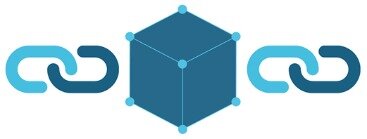Content
A blockchain system consists of two types of record, transactions and blocks. Transactions are simply the actions carried out in a particular period, these are stored together in a block. 07/06 – NEWS – SAP launches blockchain platform – Company wants to speed up the adoption of blockchain technology for businesses. But you don’t need to understand how blockchain works or the details of consensus algorithms or private versus permissioned blockchains. We assess your needs and determine whether blockchain technology can add value. We’ll be with you on the implementation journey to turn your plan into reality. And finally, we’ll be there after project delivery to support business change.
What is Blockchain in plain English?
Blockchain has been defined as a digital ledger in which transactions are recorded chronologically and publicly. A blockchain consists of a number of blocks, hence the term. Each block is a record of transactions of specific data, which can contain anything from Cryptos to voting records to medical data.
The primary goal of the bitcoin protocol was the creation of a network in which no single member of the network had to trust any other participant. The mechanism for approving and ordering transactions was designed so that it didn’t require a single trusted authority to control the network. Indeed, bitcoin doesn’t require either party to know anything more about each other than the bitcoin addresses in which they have exchanges. This freedom from the need to trust the other party is the reason that many proponents of DLT claim that the additional cost of DLT is a price worth paying.
How Can Blockchain Impact An Entire Industry?
A private blockchain network, similar to a public blockchain network, is a decentralized peer-to-peer network. However, one organization governs the network, controlling who is allowed to participate, execute a consensus protocol and maintain the shared ledger. Depending on the use case, this can significantly boost trust and confidence between participants. A private blockchain can be run behind a corporate firewall and even be hosted on premises. A public blockchain is one that anyone can join and participate in, such as Bitcoin. Drawbacks might include substantial computational power required, little or no privacy for transactions, and weak security.
Editing the blockchain is only possible if there is a consensus between the network of computers storing separate, but identical, versions of the blockchain. And this is made possible thanks to the second fundamental innovation of blockchain – cryptography. The file containing this article can, in theory, simply be stored on one computer and accessed over the internet by however many people want to use (i.e read) it. A blockchain, on the other hand, is duplicated, in its entirety, across many computers. The easiest way to understand how it differs is to think of consortium blockchains as the equivalent of a council group – with each member having responsibility for maintaining the blockchain, and each having permissions to give read access. Although they provide the same limited access and high efficiency afforded by private blockchains, dedicated nodes are set aside to be controlled by external companies or agents, instead of having only read access under a private blockchain. Much like the field of cloud computing, the function and implementation of blockchain can vary significantly depending on whether it’s designed to be public or private.
Unfortunately, the frequency at which blockchain and distributed ledger are used interchangeably has created confusion over the technology as a whole, leading many to dismiss blockchain as simply a tool for Bitcoin. Despite its success as the building block of currencies like Bitcoin, the system doesn’t necessarily need to have miners and tokens to qualify as a blockchain – the term simply refers to the structure of arranging data into blocks. Blockchains, as a result, are decentralised ledgers where data is replicated rather than distributed.
Deloitte LLP is the United Kingdom affiliate of Deloitte NSE LLP, a member firm of Deloitte Touche Tohmatsu Limited, a UK private company limited by guarantee (“DTTL”). DTTL and each of its member firms are legally separate and independent entities. Please seeAbout Deloitte to learn more about our global network of member firms.
That’s why in this article we’ll be answering the most common questions about blockchain technology. Simply put, without blockchain technology, cryptocurrencies wouldn’t exist in the form that we know them. Yet, as with so much regarding crypto, understanding blockchain can be tricky for many people.
While the debate about Bitcoin rages on, researchers have been quietly examining the technology that underpins this and other digital currencies. Blockchain can help coordinate routes and modes of transportation around cities. A blockchain network can work across bus, car, bike, train and other transportation partners to plan the best multimode route for customers, ensuring smooth transitions between vehicles and offering a single payment for users. To understand its business applications, however, it’s important to understand not only what blockchain is, but also what it isn’t. Public blockchains for cryptocurrencies are under significant pressure to address topics such as anti-money laundering and fraud. With the surging market value of cryptocurrencies, regulatory pressures are increasing all over the world. The way we handle Bitcoin and other cryptocurrencies now will inform how we handle blockchain implementations in the future.
Why It’s Hard To Trust A Blockchain
The primary distinction between these types comes down to who can access a system. What’s unique about blockchain technologies is that none of the blocks can be changed or removed after being added – a reason to ensure it’s definitely correct or accurate before adding to the chain. For the past few years, blockchain has remained one of the biggest buzz words in the tech industry. The quick-start guide for developers explains how to build a kick-starter blockchain network and start coding with the IBM Blockchain Platform Starter Plan. But for more than 1 million readers, the IBM Blockchain Pulse Blog is one of the most trusted sources for blockchain thought leadership and insights. INBLOCK issues Metacoin cryptocurrency, which is based on Hyperledger fabric, to help make digital asset transactions faster, more convenient and safer. IBM Food Trust is helping Raw Seafoods increase trust across the food supply chain by tracing every catch right from the water — all the way to supermarkets and restaurants.

For example, Bitcoin and Litecoin use the same binary format for the blockchain but differ in the cryptography and consensus approaches. Zcash is a cryptocurrency that is based on an earlier version of Bitcoin but made major changes to support added anonymity and privacy. Permissioned blockchains such as Hyperledger, Chain, R3 Corda and BigchainDB use an underlying NoSQL database to store the blockchain data. Permissioned or private blockchains appoint authority to specific parties in the network to authenticate blockchain transactions through an access layer. While private blockchains do not require a consensus process, they are less disruptive because they depend more on a built-in authority. However, the benefit here is that the system remains secure whilst also being transparent.
Lightweight nodes only store the most recent blocks, and can request older blocks when users need them. Blockchain is the ideal solution for maintaining a long-term, secure and transparent record of assets that all parties can access securely. Perhaps the most obvious is that they often require huge amounts of processing power to operate, due to the complex cryptography that must be ‘solved’ by computers in order to make the data accessible. Verifying and tracking ownership of intellectual property rights, from recording and tracking royalties for musicians to the rights to photos and images, as Kodak is developing at the moment.
Essential Blockchain Predictions
Blockchain technology enables a collective group of select participants to share data. With blockchain, transactional data from multiple sources can be collected and shared. Data is broken up into shared blocks that are chained together with unique identifiers in the form of cryptographic hashes. Blockchain provides data integrity with a single source of truth, eliminating data duplication and increasing security. Bitcoin is a decentralised digital currency, or peer-to-peer electronic payment system, where users can anonymously transfer bitcoins without the interference of a third-party authority . Bitcoin is just one example of a cryptocurrency, though; other cryptocurrency networks are also powered by blockchain technology.
If you had access to the computer storing the document you are reading now, it would be simple to edit this document. If this document was stored in a blockchain, however, you would need to input the codes to prove you had the right to make changes. If the codes do not match, then changes would not be accepted onto the other copies of the document, which, as explained above, are distributed across many of other computers.
It’s not all hype, though, as blockchain is a seriously disruptive technology. It is a form of distributed ledger technology, made famous because it is the system on which Bitcoin and other cryptocurrencies are built upon. But, as we are slowly beginning to find out, there is more to blockchain than just digital money. Multiple organizations can share the responsibilities of maintaining a blockchain.

Traditional IT systems are not built to handle the massive amount of data from an IoT deployment. The volume, velocity, and variety of data produced by IoT networks could overwhelm enterprise systems or severely limit the ability to trigger timely decisions against trusted data. Blockchain’s distributed ledger technology has the potential to address these scalability challenges with improved security and transparency.
And there are concerns regarding a lack of standardisation and the potential lack of interoperability with other blockchains. A blockchain is a constantly growing ledger which keeps a permanent record of all the transactions that have taken place in a secure, chronological, and immutable way. Blockchain Tutorial provides basic and advanced concepts of blockchain.
We can explain the business case for blockchain solutions without any jargon. However, it unlikely that Bitcoin will be transformative in its current state.
- When trying to define blockchain, you can find yourself knee-deep in jargon.
- Each participant in a blockchain (each “node”) keeps a copy of all the historical transactions that have been added to the ledger, and by comparing to the other nodes’ copies each record is kept synchronised.
- Instead of a decentralised, open ledger, a private blockchain is entirely centralised, maintained by nodes belonging to a single organisation or entity.
- Learn how it can trace when, where and how food has been grown, picked, shipped and processed — all while protecting network-participant data.
This is mandatory viewing for anyone who wants to understand how blockchain is changing the way the world works. Technical innovators turn to the IBM Blockchain Platform, the leadingHyperledger Fabricplatform, to build, operate, govern and grow blockchain solutions across any computing environment through Red Hat® OpenShift®. The IBM Blockchain Platform can change the way your ecosystem ensures trust, data provenance and efficiency to improve patient care and profitability. Blockchain creates trust because it represents a shared record of the truth. Data that everyone can believe in will help power other new technologies that dramatically increase efficiency, transparency and confidence. Now in its 3rd edition, IBM’s Blockchain for Dummies has introduced blockchain to more than 68,000 readers. Blockchain has the potential to grow to be a bedrock of the worldwide record-keeping systems, but was launched just 10 years ago.
All the so-called ‘big four’ accounting firms have also said they are testing blockchain technologies, although so far only Ernst and Young have gone public with their technology, making a digital wallet available to all its Swiss employees. The linking of blocks isn’t the only thing that keeps the chain secure, however. It’s also decentralised, each computer with the software installed has a copy of the blockchain which is constantly updated with new blocks. There is no centralised server holding the transactions and because each new block must meet the requirements of the chain nobody is able to overwrite previous transactions.











